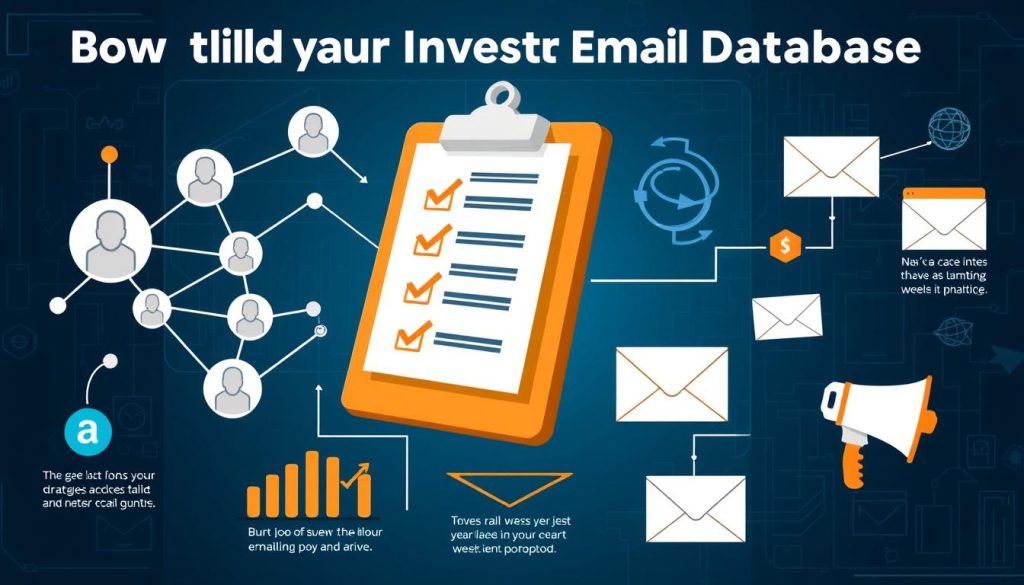In the world of real estate investment, reaching out to potential investors can be a game-changer. Crafting effective investor cold emails is an art that can open doors to exciting opportunities. Whether you’re a seasoned pro or just starting out, mastering the art of real estate investment email outreach is crucial for success.
Cold emails to investors might seem daunting, but they’re a powerful tool when done right. They allow you to connect with potential backers directly, showcasing your projects and vision. The key lies in creating messages that stand out in crowded inboxes and compel investors to respond.
This guide will walk you through the essentials of writing investor cold emails that get noticed and generate responses. We’ll cover everything from understanding your audience to crafting compelling subject lines and follow-up strategies. By the end, you’ll have the tools to create emails that turn cold contacts into warm leads.
Key Takeaways
- Investor cold emails are a vital tool for real estate investment outreach
- Personalization is crucial for standing out in investors’ inboxes
- Compelling subject lines increase the chances of your email being opened
- Clear, concise value propositions are essential for investor engagement
- Consistent follow-up strategies can significantly boost response rates
- Understanding investor profiles helps tailor your message effectively
- Compliance with legal guidelines is crucial in investment communications
Understanding the Fundamentals of Investor Communication
Good investor communication is key to getting funding. It’s about making messages that speak to potential investors. This can really help you get the funding you need.
The Psychology of Investor Decision-Making
Investors look at many things when deciding. They want to match their risk level, financial goals, and values with the investment. Knowing this can help you make your pitch better.
Building Credibility Through Professional Communication
Being seen as credible is important. Your messages should show you know your stuff, have a good track record, and understand the market. Keep it simple and back up your claims with facts.
“Trust is the foundation of any successful investment partnership.”
Understanding Your Target Investor Profile
To reach the right investors, you need to know who they are. Look into their past investments, what they like, and what they focus on. This lets you tailor your messages to really speak to them.
| Investor Type | Key Interests | Communication Approach |
|---|---|---|
| Angel Investors | Early-stage startups, high growth potential | Emphasize innovation and market opportunity |
| Venture Capitalists | Scalable businesses, industry disruption | Focus on growth metrics and competitive advantage |
| Private Equity Firms | Established companies, steady cash flow | Highlight financial stability and expansion plans |
By getting these basics right, you can improve your chances of getting funding. Your investor outreach will be more effective.
How to Write Investor Cold Emails: Essential Components
Making effective cold emails is key for finding investors. Your email must catch their eye when talking about property investments. Let’s look at what makes a cold email stand out.
Start with a hook that grabs their attention. Use their name in a personalized greeting. Then, introduce yourself, showing you’re credible and relevant.
Next, explain why your investment is special. Talk about how it meets their goals. Keep it simple and clear about the benefits and market edge.
“The best cold emails are those that feel warm – they show you’ve done your homework and understand the investor’s needs.”
End with a clear call-to-action (CTA). This could be a call, a prospectus review, or a property visit. Make it easy for them to say yes.
| Email Component | Purpose | Example |
|---|---|---|
| Subject Line | Grab attention | “Exclusive Real Estate Opportunity: 15% ROI” |
| Opening | Personalize and introduce | “Dear [Name], I noticed your interest in [specific market]…” |
| Value Proposition | Highlight benefits | “Our property in [location] offers above-market returns…” |
| Call-to-Action | Guide next steps | “Shall we schedule a 15-minute call this week?” |
Keep it short and sweet. Focus on the most important details. By doing this, you’ll craft emails that grab investors’ attention and help you find property investment partners.
Crafting Attention-Grabbing Subject Lines for Investor Outreach
In real estate marketing, your email’s subject line is key. A good subject line can make a big difference. It’s the first thing investors see, and it decides if they open your email or delete it.
Subject Line Best Practices
Keep your subject lines short and to the point. Make them specific and relevant. Use personal touches and create a sense of urgency. But, avoid using all caps and too much punctuation, as it might get flagged as spam.
Examples of High-Converting Subject Lines
Here are some effective subject lines for real estate marketing:
- “Exclusive Investment Opportunity: 12% ROI in Downtown Chicago”
- “[Name], Are You Missing Out on This Real Estate Boom?”
- “Limited Spots: Join Our Next Property Tour This Saturday”
Avoiding Spam Triggers in Subject Lines
To make sure your emails reach the right people, steer clear of spam words like “free,” “guarantee,” or “no obligation.” Use language that shows the value to your investors.
| Do | Don’t |
|---|---|
| Use specific numbers | Use vague promises |
| Personalize with name or location | Use all caps |
| Create urgency ethically | Include spam trigger words |
Personalization Strategies for Investment Opportunity Emails
Personalization is key in targeted investor outreach. Tailoring your message to each investor’s interests and background boosts engagement. Start by researching potential investors thoroughly. Look into their investment history, preferred sectors, and recent activities.
Use this information to craft custom emails that resonate with each investor. Mention specific projects they’ve been involved in or refer to recent news about their firm. This shows you’ve done your homework and adds a personal touch to your communication.
Leverage technology for efficient personalization. Customer Relationship Management (CRM) tools can help streamline your investor relationship management process. These systems allow you to store and organize investor data, making it easier to tailor your outreach efforts.
| Personalization Element | Impact on Response Rate |
|---|---|
| Investor’s Name | +22% |
| Reference to Past Investments | +35% |
| Mention of Shared Connections | +28% |
| Industry-Specific Content | +40% |
Remember, personalization goes beyond just using an investor’s name. Tailor the content of your email to align with their investment philosophy and goals. This approach demonstrates that you understand their needs and can offer value, increasing the likelihood of a positive response to your investment opportunity.
Creating Compelling Investment Value Propositions
Making a strong value proposition is key for real estate investment email outreach. Your message should show off unique investment chances and prove their value to potential investors.
Highlighting Unique Investment Opportunities
Be different by pointing out what’s special about your investment. Talk about things like great locations, growth potential, or new development plans. Use specific details to make the investment’s future clear.
Demonstrating Market Potential
Show solid data to back up your market potential claims. Share local economic trends, population growth, and infrastructure updates. This helps investors see the investment’s long-term value.
| Market Factor | Current Value | Projected Growth |
|---|---|---|
| Population | 250,000 | 15% over 5 years |
| Median Home Price | $300,000 | 8% annual increase |
| Job Growth | 3% annually | 5% projected annual growth |
Addressing Risk and Return Expectations
Be open about risks while highlighting expected returns. Give a fair view of the investment, including ROI, cash flow, and risk plans. This builds trust and shows your knowledge in property investments.
“The best real estate investments balance potential returns with manageable risks, creating a compelling opportunity for savvy investors.”
With a solid value proposition, your real estate investment email outreach will grab potential investors’ attention. This boosts your success chances.
Building an Effective Investor Email Database
Creating a strong investor database is key for finding investors. It takes careful planning and execution. This way, you target the right investors for your opportunities.
Sourcing Quality Investor Contacts
Getting high-quality investor contacts is the first step. Attend industry events and network with professionals. Use online platforms like LinkedIn too.
Professional databases and investment forums are also great for leads.

Segmentation Strategies
Segmenting your contacts is crucial for effective outreach. Sort them by investment preferences, portfolio size, and location. This makes your messages more personal and boosts response rates.
| Segment | Criteria | Outreach Strategy |
|---|---|---|
| Angel Investors | Early-stage focus, $50k-$500k investments | Highlight growth potential, team expertise |
| Venture Capitalists | Series A and beyond, $1M+ investments | Emphasize market traction, scalability |
| Family Offices | Long-term outlook, diverse portfolios | Focus on stable returns, risk mitigation |
Database Maintenance and Updates
Keeping your database up-to-date is essential. Update contact info and track preferences. Remove old contacts to keep your database fresh.
Set up a system for new leads and refining data. This helps with ongoing investor lead generation.
Timing and Frequency in Investor Email Outreach
Mastering timing and frequency is key for real estate marketing and attracting investors. Knowing when and how often to reach out is crucial. It can make or break your efforts to draw in potential investors.
The best time to send emails is early morning or late afternoon on weekdays. This puts your message at the top of their inbox. Avoid sending on weekends or holidays, as they get lost.
When it comes to frequency, finding a balance is important. Too many emails can be annoying, while too few might make you forgettable. A good strategy is to send an initial email and then two to three follow-ups a week apart. This keeps you on their radar without being a bother.
“The right timing can turn a cold email into a warm lead. It’s not just about what you say, but when you say it.”
Every investor is different. Pay attention to how they respond and adjust your timing. Some might like early morning emails, while others might prefer evenings. Tailoring your approach can greatly improve your chances of attracting investors.
- Send emails on weekdays, preferably early morning or late afternoon
- Space follow-ups about a week apart
- Limit follow-ups to 2-3 messages
- Adapt your timing based on individual investor preferences
By fine-tuning your timing and frequency, you’ll make your real estate marketing more effective. This will increase your chances of securing valuable investor partnerships.
Follow-up Strategies That Convert
Effective follow-up is key in managing investor relationships. A good plan can turn initial interest into lasting partnerships. Let’s look at strategies that work.
Creating Follow-up Sequences
Make a series of emails to keep potential investors interested. Start with a gentle reminder, then share more about your opportunity. This keeps them engaged without overwhelming them.

Persistence Without Pestering
Find the right balance between being persistent and respecting investors’ time. Space out your emails and vary the content and tone. Use different types of direct mail to keep interest without being a bother.
Response Management Systems
Use a system to track how investors interact with you. This lets you personalize your approach and time your follow-ups right. A good system helps you:
- Keep track of who opens your emails and responds
- Plan the right time for follow-ups
- See which messages work best
| Follow-up Type | Timing | Content Focus |
|---|---|---|
| Initial Reminder | 3-5 days after first contact | Brief recap of opportunity |
| Value Proposition | 1-2 weeks later | Detailed benefits and ROI |
| Social Proof | 3-4 weeks later | Testimonials or case studies |
By using these strategies, you’ll improve your investor relationship management. You’ll also make your direct mail for investors more effective.
Legal Compliance and Best Practices in Investment Communication
When you’re doing investor email marketing, it’s key to follow the law. The Securities and Exchange Commission (SEC) has strict rules for investment talks. These rules protect investors and keep the market fair.
SEC Guidelines for Investment Communications
The SEC wants clear, honest, and open talks with investors. This rule applies to emails about real estate investments too. Don’t make big claims or promises about money. Always talk about the possible risks and benefits.
Anti-Spam Regulations
Follow anti-spam laws when emailing investors. The CAN-SPAM Act has rules for business emails. Make sure to include your address and a way to opt-out. Don’t use fake subject lines or hide that your email is an ad.
Disclosure Requirements
Be open about who you are and any money interests. If you’re pushing a certain investment, share all important details. This includes costs, commissions, and any conflicts of interest. Being transparent helps build trust in your emails.
FAQ
What are the key components of an effective investor cold email?
A good investor cold email has a catchy subject line and a personalized greeting. It also includes a brief introduction and a clear value proposition. You should mention the investment opportunity details and include a call-to-action. Don’t forget to sign off professionally.
The email should be short and focused on what the investor can gain. It’s important to tailor the email to their interests and investment profile.
How can I improve my email open rates when reaching out to investors?
To boost email open rates, create subject lines that grab attention. Keep them short, relevant, and avoid spam words. Personalize the email by mentioning the investor’s name or company.
Timing is key. Send emails when investors are likely to check their inbox. Test and refine your subject lines based on how well they perform.
What’s the best way to personalize cold emails to investors?
To personalize cold emails, research the investor’s past investments and preferences. Mention specific details about their investments or recent activities. Tailor your opportunity to match their interests.
Use a friendly yet professional tone. Show that you’ve taken the time to understand their investment goals.
How often should I follow up with potential investors?
Follow up 2-3 times, with a gap of 5-7 days between each email. If there’s no response after the third try, send a final email. Always add value in each follow-up, not just checking in.
What legal considerations should I be aware of when sending cold emails to investors?
Be aware of SEC guidelines and anti-spam laws like the CAN-SPAM Act. Include an unsubscribe option, your address, and clearly mark the email as an ad. Avoid making specific claims and include disclaimers.
How can I build a quality investor email database?
Start by attending industry events and networking. Use LinkedIn and investor lead generation tools to find contacts. Organize investor info, including preferences and past interactions.
Keep your database clean and up-to-date for accuracy and relevance.
What’s the ideal length for an investor cold email?
The ideal length is 150-200 words. This allows for a brief introduction, value proposition, and call-to-action. Keep it concise and use bullet points for clarity.
The goal is to spark interest and set up a follow-up, not to share too much.
How can I demonstrate credibility in my cold emails to investors?
Show your relevant experience and successful projects. Mention impressive metrics or achievements. If you have mutual connections, mention them.
Use professional language and ensure your email is error-free. Include links to your professional profile or website for validation.
What are some effective calls-to-action for investor cold emails?
Effective calls-to-action should be clear and low-pressure. Examples include inviting a brief call or sending a detailed prospectus. Make it easy for the investor to respond.
How can I track the success of my investor email outreach campaigns?
Use email marketing tools to track open rates, click-through rates, and responses. Monitor which emails and subject lines work best. Track conversion rates from initial contact to investment.
Use software to log all interactions and outcomes. Analyze data to improve your approach over time.


